|
Over
the years, I have met many Americans who have proudly stated that they
had a Yaqui grandmother or Yaqui great-grandfather or are in some way
descended from the Yaqui Indians of Mexico's northwest coastal region.
Many Mexican Americans have indigenous roots from various parts of
Mexico
, but the assimilation and mestizaje that took place in many northern
and central states of
Mexico
has obscured any cultural or linguistic identity with specific tribes.
However, the Yaqui Indians - and their cousins, the Mayo Indians - have
held tightly to their ethnic and linguistic identity in a way that many
other indigenous groups have not.
Although
many cultural, spiritual and linguistic traits of
Mexico
's Amerindians have been preserved in the southern states. It is
difficult to find indigenous tribes in northern
Mexico
who have continued to practice at least some of their ancient practices.
The Tarahumara, Tepehuanes, Huicholes, Yaquis and Mayos stand in that
rare breed of Native Americans that has held onto many aspects of their
original culture. The story of the Yaquis and their resistance is
a truly dynamic story that reminds that the spirit of a people cannot be
conquered if a people truly believe in their unique destiny.
The
story of the Yaquis and their Mayo cousins takes us to the Mexican
states of Sinaloa and
Sonora
. The State of
Sinaloa
, with a surface area of 58,487 square kilometers (22,582 square miles),
is basically a narrow strip of land running along the
Pacific Ocean
. The state of
Sonora
, which lay north of Sinaloa, consists of 182,554 square kilometers
(70,484 square miles) and has a common border with
Arizona
and
New Mexico
. The following paragraphs analyze the various confrontations and wars
that the Yaquis and Mayos waged to protect their native lands and
customs from imperialism.
First
Contact: 1531.
In December 1529, Nuño Beltrán de Guzmán left
Mexico City
with an expedition of 300 Spaniards and 10,000 Indian allies (Tlaxcalans,
Aztecs and Tarascans). Guzmán, a lawyer by profession, had
already gained a reputation as a ruthless and cruel administrator when
he served as Governor of Panuco on the
Gulf
Coast
. Traveling through Michoacán, Guanajuato, Jalisco, and Sinaloa,
Guzmán left a trail of devastation and terror wherever he went.
In March 1531, Guzmán's army reached the site
of present-day Culiacán (now in Sinaloa), where his force engaged an
army of 30,000 warriors in a pitched battle. The indigenous forces were
decisively defeated and, as Mr. Gerhard notes, the victors
"proceeded to enslave as many people as they could catch."
However, before long, however, reports of Guzmán's
brutal treatment of the Indians reached the authorities in
Mexico City
. In 1536, the Viceroy of Nueva España Antonio de Mendoza
arrested Guzmán and imprisoned him. He was returned to
Spain
in chains where he was put on trial and died in obscurity and disgrace.
The indigenous people confronted by Guzmán in
his 1531 battle belonged to the Cáhita language group, and were most
likely the Yaqui Indians. Speaking eighteen closely related dialects,
the Cáhita peoples of Sinaloa and
Sonora
numbered about 115,000 and were the most numerous of any single language
group in northern
Mexico
. These Indians inhabited the coastal area of northwestern
Mexico
along the lower courses of the Sinaloa, Fuerte, Mayo, and
Yaqui
Rivers
.
During
his stay in Sinaloa, Guzmán's army was ravaged by an epidemic that
killed many of his Amerindian auxiliaries. Finally, in October 1531,
after establishing San Miguel de Culiacán on the
San Lorenzo
River
, Guzmán returned to the south, his mostly indigenous army decimated by
hunger and disease. But the Spanish post at Culiacán remained, Mr.
Gerhard writes, as "a small outpost of Spaniards surrounded on all
sides by the sea by hostile Indians kept in a state of agitation"
by the slave-hunting activities of the Guzmán's forces.
Epidemic
Disease - Sinaloa and
Sonora
(1530-1536).
Daniel T. Reff, the author of "Disease, Depopulation, and Culture
Change in Northwestern New Spain, 1518-1764," explains that
"viruses and other microorganisms undergo significant genetic
changes when exposed to a new host environment, changes often resulting
in new and more virulent strains of microorganisms." The Indians of
the coastal region, never having been exposed to Spaniards and their
diseases previously, provided fertile ground for the proliferation of
smallpox and measles. It is believed that as many as 130,000 people died
in the
Valley
of
Culiacán
during the Measles Pandemic of 1530-1534 and the Smallpox Plague of
1535-1536.
As
the Spaniards moved northward they found an amazing diversity of
indigenous groups. Unlike the more concentrated Amerindian groups of
central
Mexico
, the Indians of the north were referred to as "ranchería
people" by the Spaniards. Their fixed points of settlements (rancherías)
were usually scattered over an area of several miles and one dwelling
may be separated from the next by up to half a mile. The renowned
anthropologist, Professor Edward H. Spicer (1906-1983), writing in
"Cycles of Conquest: The Impact of Spain,
Mexico
, and the
United States
on the Indians of the Southwest, 1533-1960," stated that most
ranchería people were agriculturalists and farming was their primary
activity.
Hurdaide's
Offensive in Sinaloa (1599-1600).
In 1599, Captain Diego de Hurdaide established San Felipe y Santiago on
the site of the modern city of
Sinaloa
. From here, Captain Hurdaide waged a vigorous military campaign that
subjugated the Cáhita-speaking Indians of the
Fuerte
River
- the Sinaloas, Tehuecos, Zuaques, and Ahomes. These indigenous groups,
numbering approximately 20,000 people, resisted strongly.
Initial
Contact with the Mayo Indians (1609-1610).
The Mayo Indians were an important Cáhita-speaking tribe occupying some
fifteen towns along the Mayo and Fuerte rivers of southern
Sonora
and northern Sinaloa. As early as 1601, they had developed a curious
interest in the Jesuit-run missions of their neighbors. The Mayos sent
delegations to inspect the Catholic churches and, as Professor Spicer
observes, "were so favorably impressed that large groups of Mayos
numbering a hundred or more also made visits and became acquainted with
Jesuit activities." As the Jesuits began their spiritual conquest
of the Mayos, Captain Hurdaide, in 1609, signed a peace treaty with the
military leaders of the Mayos.
Spanish
Contact with the Yaqui Indians (1610).
At contact, the Yaqui Indians occupied the coastal region of Sinaloa
along the
Yaqui
River
. Divided into eighty autonomous communities, their primary activity was
agriculture. Although the Yaqui Indians had resisted Guzmán's advance
in 1531, they had welcomed Francisco de Ibarra who came in peace in
1565, apparently in the hopes of winning the Spaniards as allies in the
war against their traditional enemies, the Mayos.
In
1609, as Captain Hurdaide became engaged with the pacification of the
Ocoronis (another Cáhita-speaking group of northern Sinaloa), he
reached the
Yaqui
River
, where he was confronted by a group of Yaquis. Then, in 1610, with the
Mayo and Lower Pima Indians as his allies, Captain Hurdaide returned to
Yaqui territory with a force of 2,000 Indians and forty Spanish
soldiers. He was soundly defeated. When he returned with another force
of 4,000 Indian foot soldiers and fifty mounted Spanish cavalry, he was
again defeated in a bloody daylong battle.
Conversion
of the Mayo Indians (1613-1620).
In 1613, at their own request, the Mayos accepted Jesuit missionaries.
Soon after, the Jesuit Father Pedro Mendez established the first mission
in Mayo territory. In the first fifteen days, more than 3,000 persons
received baptism. By 1620, with 30,000 persons baptized, the Mayos had
been concentrated in seven mission towns.
Conversion
of the Yaqui Indians (1617-1620).
In 1617, the Yaquis, utilizing the services of Mayo intermediaries,
invited the Jesuit missionaries to begin their work among them.
Professor Spicer noted that after observing the Mayo-Jesuit interactions
that started in 1613, the Yaquis seemed to be impressed with the
Jesuits. Bringing a message of everlasting life, the Jesuits impressed
the Yaquis with their good intentions and their spirituality. Their
concern for the well being of the Indians won the confidence of the
Yaqui people. In seeking to protect the Yaqui from exploitation by mine
owners and encomenderos, the Jesuits came into direct conflict with the
Spanish political authorities. From 1617 to 1619, nearly 30,000 Yaquis
were baptized. By 1623, the Jesuits had reorganized the Yaquis from
about eighty rancherías into eight mission villages.
Detachment
of the
Province
of
Sinaloa
and
Sonora
(1733).
In 1733, Sinaloa and
Sonora
were detached from Nueva Vizcaya and given recognition as the
province
of
Sonora
y Sinaloa. Ms. Deeds commented that this detachment represented a
recognition of "the growth of a mining and ranching secular society
in this northwestern region."
Rebellion
of the Yaqui, Pima, and Mayo Indians - Sinaloa and
Sonora
(1740).
The Yaqui and Mayo Indians had lived in peaceful coexistence with the
Spaniards since the early part of the Seventeenth Century. Ms. Deeds, in
describing the causes of this rebellion, observes that the Jesuits had
ignored "growing Yaqui resentment over lack of control of
productive resources." During the last half of the Seventeenth
Century, so much agricultural surplus was produced that storehouses
needed to be built. These surpluses were used by the missionaries to
extend their activities northward into the
California
and Pima missions. The immediate cause of the rebellion is believed to
have been a poor harvest in late 1739, followed in 1740 by severe
flooding which exacerbated food shortages.
Ms.
Deeds also points out that the "increasingly bureaucratic and
inflexible Jesuit organization obdurately disregarded Yaqui demands for
autonomy in the selection of their own village officials." Thus,
this rebellion, writes Ms. Deeds, was "a more limited endeavor to
restore the colonial pact of village autonomy and territorial
integrity." At the beginning of the revolt, an articulate leader
named El Muni emerged in the Yaqui community. El Muni and another Yaqui
leader, Bernabé, took the Yaquis' grievances to local civil
authorities. Resenting this undermining of their authority, the Jesuits
had Muni and Bernabé arrested.
The
arrests triggered a spontaneous outcry, with two thousand armed
indigenous men gathering to demand the release of the two leaders. The
Governor, having heard the complaints of both sides, recommended that
the Yaqui leaders go to
Mexico City
to testify personally before the Viceroy and Archbishop Vizrón. In
February 1740, the Archbishop approved all of the Yaqui demands for free
elections, respect for land boundaries, that Yaquis be paid for work,
and that they not be forced to work in mines.
The
initial stages of the 1740 revolt saw sporadic and uncoordinated
activity in Sinaloa and
Sonora
, primarily taking place in the Mayo territory and in the Lower Pima
Country. Catholic churches were burned to the ground while priests and
settlers were driven out, fleeing to the silver mining town at Alamos.
Eventually, Juan Calixto raised an army of 6,000 men, composed of Pima,
Yaqui and Mayo Indians. With this large force, Calixto gained control of
all the towns along the Mayo and
Yaqui
Rivers
.
However,
in August 1740, Captain Agustín de Vildósola defeated the insurgents.
The rebellion, however, had cost the lives of a thousand Spaniards and
more than 5,000 Indians. After the 1740 rebellion, the new Governor of
Sonora and Sinaloa began a program of secularization by posting
garrisons in the Yaqui Valley and encouraging Spanish residents to
return to the area of rebellion. The Viceroy ordered the partition of
Yaqui land in a "prudent manner." The Yaquis had obtained a
reputation for being courageous warriors during the rebellion of 1740
and the Spanish handled them quite gingerly during the late 1700s. As a
result, the government acquisition of Yaqui lands did not begin began
until 1768.
Mexico
Wins
Independence
– 1822.
Mexico
won independence from
Spain
. Following independence, Nueva Vizcaya in 1824 was divided into the
states of
Chihuahua
and
Durango
.
Yaqui,
Mayo and Opata Rebellions of 1825-1833.
After
Mexico
gained independence in 1822, the Yaquis became citizens of a new nation.
During this time, there appeared a new Yaqui leader. Ms. Linda Zoontjens,
the author of A Brief History of the Yaqui and Their Land, referred to
Juan de la Cruz Banderas as a "revolutionary visionary" whose
mission was to establish an Indian military confederation. Once again,
the Mayo Indians joined their Yaqui neighbors in opposing the central
authorities. With a following of 2,000 warriors, Banderas carried out
several raids. But eventually, Banderas made an arrangement with the
Government of Sonora. In exchange for his "surrender,"
Banderas was made the Captain-General of the Yaqui Militia.
By
early 1832, Banderas had formed an alliance with the Opatas. Together,
the Opatas and Yaquis were able to field an army of almost 2,500
warriors, staging repeated raids against haciendas, mines and towns in
Sonora
. However, the Mexican army continued to meet the indigenous forces in
battle, gradually reducing their numbers. Finally, in December 1832,
volunteers tracked down and captured Banderas. The captive was turned
over to the authorities and put on trial. A month later, in January
1833, Banderas was executed, along with eleven other Yaqui, Mayo and
Opata leaders who had helped foment rebellion in
Sonora
.
The
Yaqui people, after the capture and execution of Banderas, subsided into
a tense, uneasy existence. Some, during periods of food shortage, would
take up "peaceful" residence outside the presidios, to ask for
rations. Others undertook low-level raiding.
The
Resistance of the Yaqui Indians (1838-1868).
After the death of Banderas, the Yaqui Indians attempted to forge
alliances with anyone who promised them land and autonomy. They would
align themselves with the Centralists or Conservatives as long as those
groups protected their lands from being encroached upon. But when
General José Urrea took power in 1841, he oversaw the division of Yaqui
lands from communal plots into private plots.
Governor
Ignacio Pesqueira of
Sonora
drew up a list of preventative measures to be used against the Yaquis,
Opatas and their allies. These orders called for the execution of rebel
leaders. In addition, hacienda owners were required to make up lists of
all employees, including a notation for those who were suspected of
taking part in rebellious activity against the civil government. These
measures were ineffective in dealing with the growing unrest among the
Yaqui and Opatas.
In
1867 Governor Pesqueira of
Sonora
organized two military expeditions against the Yaquis under the command
of General Jesus Garcia Morales. The expeditions marched on Guaymas and
Cócorit, both of which lay in the heart of Yaqui territory. These
expeditions met at Medano on the
Gulf
Coast
near the Jesuit-founded Yaqui town of
Potam
. The two expeditions, totaling about 900 men, did not meet with any
organized resistance. Instead, small parties of Yaquis resisted their
advance. By the end of the year, the Mexican forces had killed many
Yaquis. The troops confiscated much livestock, destroyed food supplies,
and shot most of the prisoners captured.
Yaqui
Insurgencies -
Sonora
(1868-1875).
During these years, the Yaquis regained their strength and periodically
attacked Mexican garrisons in their territory. In March 1868, six
hundred Yaquis arrived near the town of
Bacum
in the eastern Yaqui country to ask the local field commander for peace
terms. However, the Mexican officer, Colonel Bustamante, arrested the
whole group, including women and children. When the Yaquis gave up
forty-eight weapons, Bustamante released 150 people but continued to
hold the other 450 people. Taking his captives to a Yaqui church in
Bacum as prisoners of war, he was able to identify ten of the captives
as leaders. All ten of these men were shot without a trial.
Four
hundred and forty people were left languishing in the church overnight,
with Bustamante's artillery trained on the church door to discourage an
escape attempt. However, during the night a fire was started in the
church. The situation inside the church turned to chaos and confusion,
as some captives desperately tried to break down the door. As the Yaquis
fled the church, several salvos fired from the field pieces killed up to
120 people.
In
1875, the Mexican government suspected that a Yaqui insurrection was
brewing. In an attempt to pacify the Yaquis, Governor Jose J. Pesqueira
ordered a new campaign, sending five hundred troops from the west into
the Yaqui country. A force of 1,500 Yaquis met the Mexican troops at
Pitahaya. In the subsequent battle, the Yaquis are believed to have lost
some sixty men.
Cajeme
and the Yaqui Rebellions During the Porfiriato (1876-1887).
During
the reign of Porfirio Díaz, the ongoing struggle for autonomy and land
rights dominated Yaqui-Mexican relations. An extraordinary leader named
Cajeme now took center stage in the Yaquis' struggle for autonomy.
Cajeme, whose name meant "He who does not drink," was born José
María Leyva. He learned Spanish and served in the Mexican army.
Although Cajeme's parents were Yaqui Indians, he had become very
Mexicanized.
Cajeme's
military service with the Mexican army was so exemplary that he was
given the post of Alcalde Mayor of the
Yaqui
River
area. Soon after receiving this promotion, however, Cajeme announced his
intention to withdraw recognition of the Mexican Government if they did
not grant the Yaquis self-government. Cajeme galvanized a new generation
of Yaquis and Mayos and led his forces against selected towns in Yaqui
Country.
Mexican
Offensives Against the Yaquis (1885-1901).
Dr. Hatfield, in studying the struggle over Indian lands, wrote,
"Rich Yaqui and Mayo valley lands possessed a soil and climate
capable of growing almost any crop. Therefore, it was considered in the
best national interest to open these lands to commercial development and
foreign investors." During the 1880s, the Governor of Sonora,
Carlos Ortiz, became concerned about his state's sovereignty over Indian
lands. In the hopes of seizing
Indian Territory
, Ortiz withdrew his state troopers from the border region where they
had been fighting the Apache Indians. In the meantime, Cajeme's forces
began attacking haciendas, ranches and stations of the Sonora Railroad
in the Guaymas and Alamos districts.
With
rebel forces causing so much trouble, General Luis Torres, the Governor
of Sonora, petitioned the Federal Government for military aid.
Recognizing the seriousness of this rebellion, Mexican President
Porfirio Díaz authorized his Secretary of War to begin a campaign
against the Sonoran rebels. In 1885, 1,400 federal troops arrived in
Sonora
to help the Sonoran government put down the insurrection. Together with
800 state troops, the federal forces were organized into an expedition,
with the intention of meeting the Yaquis in battle.
During
1886, the Yaquis continued to fortify more of their positions. Once
again, Mexican federal and state forces collaborated by making forays
into Yaqui country. This expedition confiscated more than 20,000 head of
livestock and, in April 1886, occupied the Yaqui town of
Cócorit
. On May 5, the fortified site of Anil was captured after a pitched
battle. After suffering several serious military reverses, the Yaqui
forces fell back to another fortified site at Buatachive, high in the
Sierra de Bacatet, to make a last stand against the Mexican forces.
Putting
together a fighting force of 4,000 Yaquis, along with thousands of Yaqui
civilians, Cajeme prepared to resist. On May 12, after a four-day siege,
Mexican troops under General Angel Martinez attacked Buatachive. In a
three-hour battle, the Mexican forces killed 200 Yaqui soldiers, while
capturing hundreds of women and children. Cajeme and a couple thousand
Yaquis managed to escape the siege.
After
this staggering blow, Cajeme divided his forces into small bands of
armed men. From this point on, the smaller units tried to engage
government troops in small skirmishes. Although Cajeme asked the Federal
authorities for a truce, the military leaders indicated that all Yaqui
territory was part of the nation of
Mexico
. After a few months, expeditions into the war zone led to the capture
of four thousand people. With the end of the rebellion in sight, General
Luis Torres commenced with the military occupation of the entire Yaqui
Nation.
With
the end of hostilities, Mexican citizens began filtering into Yaqui
territory to establish permanent colonies. On April 12, 1887, nearly a
year after the Battle of Buatachive, Cajeme was apprehended near Guaymas
and taken to Cócorit where he was to be executed before a firing squad
in 1887. After being interviewed and photographed by Ramon Corral, he
was taken by steamboat to Medano but was shot while trying to escape
from the soldiers.
Government
forces, searching for and confronting armed Yaquis, killed 356 Yaqui men
and women over a period of two years. A comprehensive search for the
Yaqui holdouts in their hiding places forced the rebels into the
Guaymas
Valley
where they mingled with Yaqui laborers on haciendas and in railroad
companies. As a result, the Mexican Government accused owners of
haciendas, mining and railroad companies of shielding criminal Yaqui
fugitives. Circulars were issued which forbade the owners from giving
money, provisions, or arms to the rebels. During this time, some Yaquis
were able to slip across the border into
Arizona
to work in mines and purchase guns and ammunition. The Mexican border
guards were unable to stop the steady supply of arms and provisions
coming across the border from
Arizona
. Eventually,
Mexico
's Secretary of War ordered the recruitment of Opatas and Pimas to hunt
down the Yaqui guerillas.
In
1894-95, Luis Torres instituted a secret police system and carried out a
meticulous survey of the entire Sierra de Bacatete, noting locations of
wells supplying fresh water as well as all possible entrances and exits
to the region. Renegade bands of Yaquis, familiar with the terrain of
their own territory, were able to avoid capture by the government
forces. During the campaign of 1895-97, captured rebels were deported to
southern
Mexico
to be drafted into the army.
In
1897, the commander of the campaign forces, General Torres initiated
negotiations with the Yaqui leader Tetabiate, offering the Yaquis
repatriation into their homeland. After a number of months of
correspondence between the guerilla leader and a colonel in one of the
regiments, a place was set for a peace agreement to be signed. On May
15, 1897,
Sonora
state officials and the Tetabiate signed the Peace of Ortiz. The Yaqui
leader, Juan Maldonado, with 390 Yaquis, consisting of 74 families,
arrived from the mountains for the signing of the peace treaty.
In
the six years following the signing of peace, Lorenzo Torres, the
Governor of Sonora, made efforts to complete the Mexican occupation of
Yaqui territory. Ignoring the terms of the peace treaty, four hundred
Yaquis and their families defied the government and assembled in the
Bacatete
Mountains
. Under the command of their leader Tetabiate, the Yaquis sustained
themselves by making nighttime raids on the haciendas near Guaymas.
In
the meantime, Federal troops and army engineers, trying to survey the
Yaqui lands for distribution, found the terrain to be very difficult and
were constantly harassed by defiant rebel forces. The government could
not understand the Yaqui refusal to divide their land and become
individual property owners. Their insistence of communal ownership based
on traditional indigenous values also supported their objection to
having soldiers in their territory. However, resentful of the continuing
military occupation of their territory, the Yaqui colonies of Bácum and
Vícam took up arms in 1899. Large detachments of rebel Yaqui forces
confronted troops on the
Yaqui
River
and suffered large casualties. Afterwards, a force of three thousand
fled to the sierras and barricaded themselves on a plateau called
Mazocoba where they were defeated by government troops.
When
Tetabiate and the rebel forces fled to the Sierras, the government sent
out its largest contingent to date with almost five thousand federal and
state troops to crush this latest rebellion. Laws restricting the sale
of firearms were reenacted and captured rebels were deported from the
state. On January 18, 1900, three columns of his Government forces
encountered a party of Yaquis at Mazocoba in the heart of the
Bacatete
Mountains
. The Yaquis, mostly on foot, were pursued into a box canyon in a rugged
portion of the mountains.
After
a daylong battle, the Yaquis ceased fighting. The soldiers had killed
397 men, women, and some children, while many others had committed
suicide by jumping off the cliffs. Roughly a thousand women and children
were taken prisoner. By the end of 1900, there were only an estimated
300 rebels holding out in the
Bacatete
Mountains
. Six months later, Tetabiate was betrayed and murdered by one of his
lieutenants and the Secretary of War called off the campaign in August
1901.
Deportation
of Yaqui Indians (1902-1910).
After the turn of the century, the Mexican federal government decided on
a course of action for clearing Yaquis out of the state of
Sonora
. Colonel Emilio Kosterlitzky was placed in charge of Federal Rural
Police in the state with orders to round up all Yaquis and arrange to
deport them southward. Between 1902 -1908, between eight and possibly as
many as fifteen thousand of the estimated population of thirty thousand
Yaquis were deported.
The
years 1904 through 1907 witnessed an intensification of guerilla
activities and corresponding government persecution. The state
government issued passports to Yaquis and those not having them were
arrested and jailed. The Sonoran Governor Rafael Izábel was so intent
on pacifying the Yaquis that he conducted his own arrests. These arrests
included women, children as well as sympathizers. "When Yaqui
rebellion threatened
Sonora
's mining interests," writes Dr. Hatfield, "Governor Rafael Izábel
deported Yaquis, considered superior workers by all accounts, to work on
Yacatán's henequen plantations."
In
analyzing the Mexican Government's policy of deportation, Dr. Hatfield
observed that deportation of the Yaquis resulted from "the Yaquis'
determination to keep their lands. Yaqui refusal to submit to government
laws conflicted with the Mexican government's attempts to end all
regional hegemony. The regime hoped to take Yaqui lands peacefully, but
this the Yaquis prevented."
The
bulk of the Yaquis were sent to work on hennequen plantations in the
Yucatán and some were sent to work in the sugar cane fields in
Oaxaca
. Sonoran hacendados protested the persecution and deportation of the
Yaquis because without their labor, their crops could not be cultivated
or harvested. In the early Nineteenth Century, many Yaqui men emigrated
to
Arizona
in order to escape subjugation and deportation to southern
Mexico
. Today, some 10,000 Yaqui Indians live in the
United States
, many of them descended from the refugees of a century ago.
The
Yaquis Indians Today.
Dr. Hatfield, in looking back on the long struggle of the Yaqui against
the federal government, writes "A government study published in
1905 cited 270 instances of Yaqui and Mayo warfare between 1529 and
1902, excluding eighty-five years of relative peace between 1740 and
1825." But from 1825 to 1902, the Yaqui Nation was waging war on
the government almost continuously.
By
1910, the Yaquis had been almost entirely eliminated from their
homeland. In the 1910 census, 5,175 persons classified as speakers
of the Yaqui language five years of age and older lived within the
Mexican
Republic
. However, by 1930, the Yaqui population had dropped to
2,134. It is very likely that many persons of Yaqui heritage may
have denied that they spoke the language or belonged to the ethnic
group.
The
Yaquis fought their last major battle with Mexican forces in 1927.
However, in 1939, Mexican President Cardenas granted the Yaqui tribe
official recognition and title to roughly one-third of their traditional
tribal lands.
Even
today, the Yaquis have managed to maintain a form of autonomy within the
Mexican nation. In the 2000 Mexican census,
Sonora
had a total of 55,694 persons who were classified as speakers of
indigenous languages five years of age and over. This group
represented only 2.85% of the entire population of
Sonora
. The population of persons speaking the Yaqui language, however,
was only 12,467.
The
Yaqui identity endures in the present day, but is in danger of
extinction. "They are threatened continually by the expansion
of the Mexican population, as landless Mexicans invade their territory
or intermarry with Yaquis and start to take over some of the
lands," said Joe Wilder, Director of the
University
of
Arizona
's
Southwest
Center
. "The Yaquis are at
once deeply admired by Sonorans and deeply despised," said Wilder,
noting that the Yaqui deer dancer is the official state symbol.
To
many Americans, the Yaqui Indians represent an enduring legacy of the
pre-Hispanic era. Because the mestizaje and assimilation of many
Mexican states was so complete and widespread, the Yaqui Indians are
seen as a rare vestige of the old
Mexico
.
©
2008, John P. Schmal.
Sources:
Susan
M. Deeds, "Indigenous Rebellions on the Northern Mexican Mission
Frontier: From First-Generation to Later Colonial Responses," in
Susan Schroeder, Native Resistance and the Pax Colonial in
New Spain
.
Lincoln
,
Nebraska
:
University
of
Nebraska
Press, 1998, pp. 1-29.
Shelley
Bowen Hatfield, "Chasing Shadows: Indians Along the United
States-Mexico Border 1876-1911."
Albuquerque
:
University
of
New Mexico
Press, 1998.
Oscar
J. Martínez, "Troublesome Border."
Tucson
: The
University
of
Arizona
Press, 1988.
Cynthia
Radding, "The Colonial Pact and Changing Ethnic Frontiers in
Highland Sonora, 1740-1840," in Donna J. Guy and Thomas E. Sheridan
(eds.), "Contested Ground: Comparative Frontiers on the Northern
and Southern Edges of the Spanish Empire," pp. 52-66.
Tucson
: The
University
of
Arizona
Press, 1998.
Daniel
T. Reff, "Disease, Depopulation and Culture Change in
Northwestern New Spain
, 1518-1764."
Salt Lake City
:
University
of
Utah
Press, 1991.
Robert
Mario Salmon, "Indian Revolts in
Northern New Spain
: A Synthesis of Resistance (1680-1786)."
Lanham
,
Maryland
: University Press of
America
, 1991.
Edward
H. Spicer, "Cycles of Conquest: The Impact of
Spain
,
Mexico
, and the
United States
on the Indians of the Southwest, 1533-1960."
Tucson
,
Arizona
:
University
of
Arizona
Press, 1997.
Edward
H. Spicer, "The Military History Of The Yaquis From 1867 To 1910:
Three Points Of View." <Online: http://usaic.hua.army.mil/History/Html/spicer.html
. September 12, 2001.
Linda
Zoontjens, "Brief History of the Yaqui and their Land."
Online: http://sustainedaction.org/Explorations/history_of_the_yaqui.htm
. July 8, 2001
|
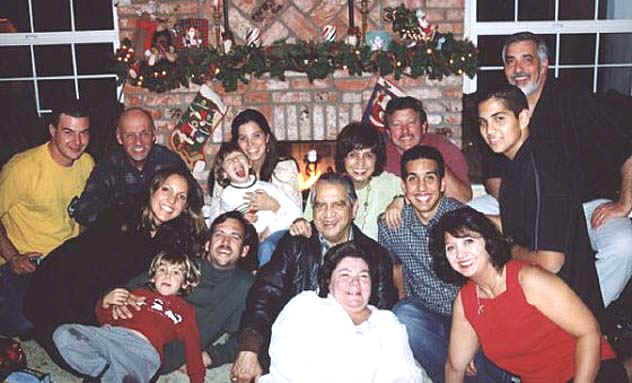
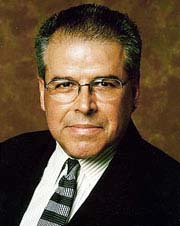 Eduardo
Díaz, the executive director of the National Hispanic Cultural Center
in Albuquerque, N.M., has been named director of the Smithsonian
Latino Center, the Smithsonian said on Thursday. Mr. Díaz, who will
start the job Dec. 8, replaces Pilar O’Leary, who resigned in
February after revelations that she had charged the office for
personal expenses like salon, spa and gift shop purchases, solicited
free tickets for the Latin Grammy Awards and stayed in four- and
five-star hotels while traveling for business. In his current
position, which he has held since 2005, Mr. Díaz has overseen what is
reputedly the largest Latino cultural center in the United States, a
division of New Mexico’s Department of Cultural Affairs. Daniel E.
Sheehy, director of Smithsonian Folkways Recordings, has served as
acting director since February. Source: Latinos in The Industry
11.11.2008
Eduardo
Díaz, the executive director of the National Hispanic Cultural Center
in Albuquerque, N.M., has been named director of the Smithsonian
Latino Center, the Smithsonian said on Thursday. Mr. Díaz, who will
start the job Dec. 8, replaces Pilar O’Leary, who resigned in
February after revelations that she had charged the office for
personal expenses like salon, spa and gift shop purchases, solicited
free tickets for the Latin Grammy Awards and stayed in four- and
five-star hotels while traveling for business. In his current
position, which he has held since 2005, Mr. Díaz has overseen what is
reputedly the largest Latino cultural center in the United States, a
division of New Mexico’s Department of Cultural Affairs. Daniel E.
Sheehy, director of Smithsonian Folkways Recordings, has served as
acting director since February. Source: Latinos in The Industry
11.11.2008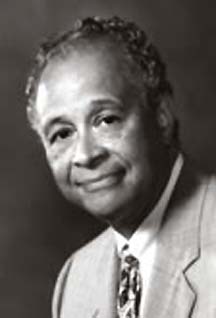 sure
its faculty and staff represent the diversity of the community. It
is not by accident that the university presents a friendly
face. . .and friendly faces..
sure
its faculty and staff represent the diversity of the community. It
is not by accident that the university presents a friendly
face. . .and friendly faces..
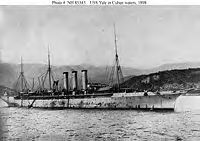
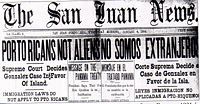
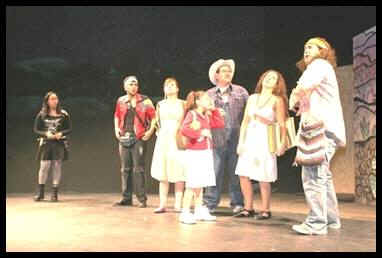
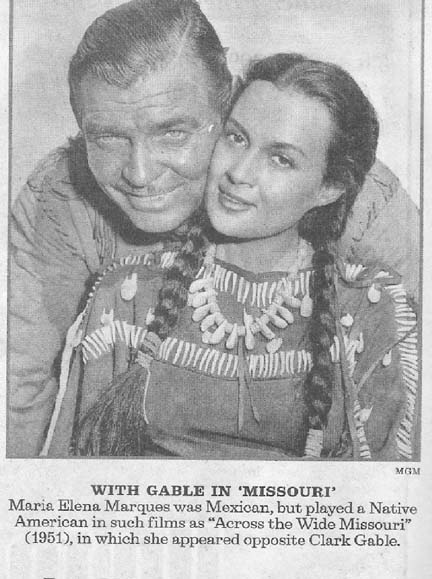 Maria
Elena Marques, 83, a Mexican actress who starred in the 1947 movie
"The Pearl," died of heart failure Tuesday, her family
announced in Mexico City.
Maria
Elena Marques, 83, a Mexican actress who starred in the 1947 movie
"The Pearl," died of heart failure Tuesday, her family
announced in Mexico City.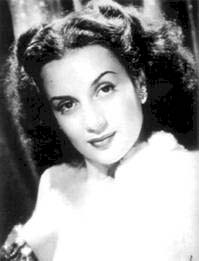
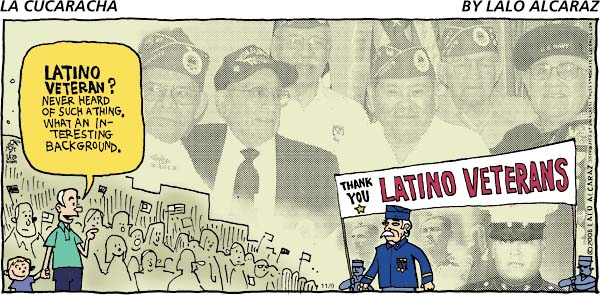
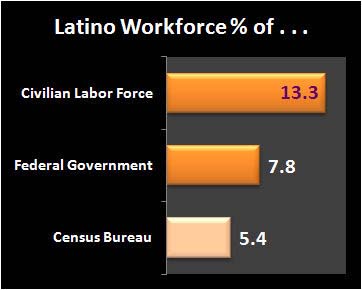
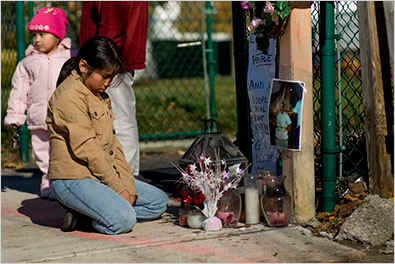
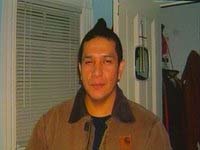 Latino
immigrant Marcello Lucero, 37, was murdered in what Suffolk Police are
calling a hate crime. He was beaten and stabbed in Patchogue Saturday
night by a gang of seven thugs from the East Patchogue/Medford section
of South County. All seven were arrested and face a charge of
first-degree gang assault.
Latino
immigrant Marcello Lucero, 37, was murdered in what Suffolk Police are
calling a hate crime. He was beaten and stabbed in Patchogue Saturday
night by a gang of seven thugs from the East Patchogue/Medford section
of South County. All seven were arrested and face a charge of
first-degree gang assault.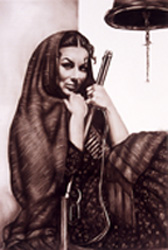 The
Bold Caballeros and Noble Bandidas (BCNB) Conference is international
in scope and considers papers and other text and visual submissions in
popular culture, belles lettres and beaux arts
focusing on social bandits or noble bandits throughout the world.
The
Bold Caballeros and Noble Bandidas (BCNB) Conference is international
in scope and considers papers and other text and visual submissions in
popular culture, belles lettres and beaux arts
focusing on social bandits or noble bandits throughout the world.

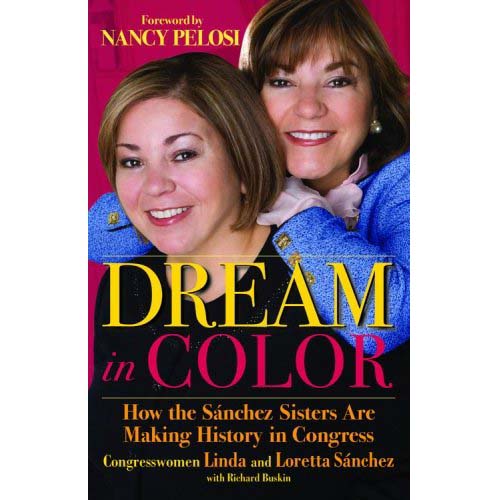
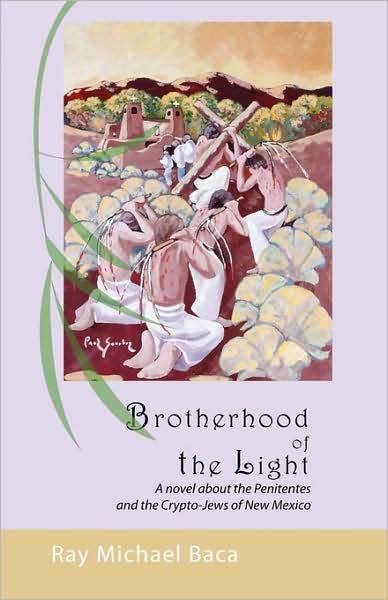 A novel about the un-easy and often misunderstood relationships of
Crypto-Jews and Hispanos in New Mexico and their deep common roots in
Spanish history--conquest and colonization--and religious faith and
shared values. Brotherhood of the Light follows the lives of three men
from one family who lived in different centuries but were inexorably
bound by the legacy of a cross that was brought from the Old World to
the New. A relic that had come to prominence at the battle for Granada,
when Spain united to expel the Moors. Descendants of Sephardic
Jews who fled the Inquisition in Spain, the family joined Los Hermanos
Penitentes. This secretive society of lay Catholic men in Northern New
Mexico, who believe in emulating Christ’s Passion, his trial, his
walk, and his suffering on the cross at the end of each Lenten season,
was used for a dozen generations as a shield by the family to disguise
their Crypto-Jewish identity while they struggled with the legacy
bestowed upon them.
A novel about the un-easy and often misunderstood relationships of
Crypto-Jews and Hispanos in New Mexico and their deep common roots in
Spanish history--conquest and colonization--and religious faith and
shared values. Brotherhood of the Light follows the lives of three men
from one family who lived in different centuries but were inexorably
bound by the legacy of a cross that was brought from the Old World to
the New. A relic that had come to prominence at the battle for Granada,
when Spain united to expel the Moors. Descendants of Sephardic
Jews who fled the Inquisition in Spain, the family joined Los Hermanos
Penitentes. This secretive society of lay Catholic men in Northern New
Mexico, who believe in emulating Christ’s Passion, his trial, his
walk, and his suffering on the cross at the end of each Lenten season,
was used for a dozen generations as a shield by the family to disguise
their Crypto-Jewish identity while they struggled with the legacy
bestowed upon them. 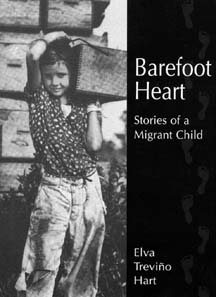
 Ask a
Mexican
Ask a
Mexican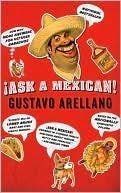 ¡Ask a Mexican! is a U.S. syndicated weekly column written by Gustavo
Arellano published by Orange County's alternative weekly OC Weekly. It
was first published in 2004 as a one-time spoof, but it ended up
becoming one of the weekly's most popular columns. Now available
in a book, ¡Ask a Mexican!
¡Ask a Mexican! is a U.S. syndicated weekly column written by Gustavo
Arellano published by Orange County's alternative weekly OC Weekly. It
was first published in 2004 as a one-time spoof, but it ended up
becoming one of the weekly's most popular columns. Now available
in a book, ¡Ask a Mexican!
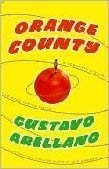 a large-circulation weekly from the Association of Alternative
Newsweeklies, the 2007 Presidents Award from the Los Angeles Press
Club and an Impacto Award from the National Hispanic Media Coalition,
and a 2008 Latino Spirit award from the California Latino Legislative
Caucus.
a large-circulation weekly from the Association of Alternative
Newsweeklies, the 2007 Presidents Award from the Los Angeles Press
Club and an Impacto Award from the National Hispanic Media Coalition,
and a 2008 Latino Spirit award from the California Latino Legislative
Caucus. 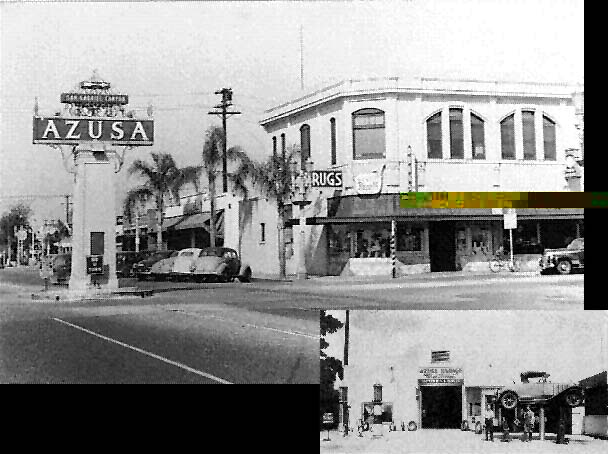
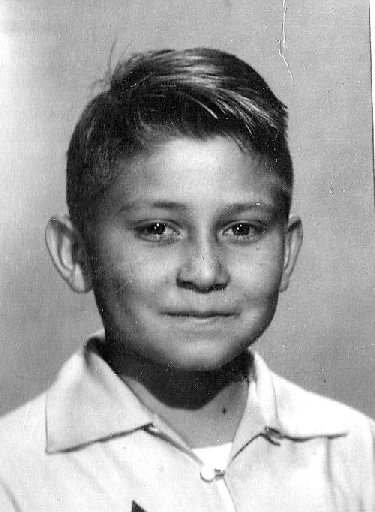


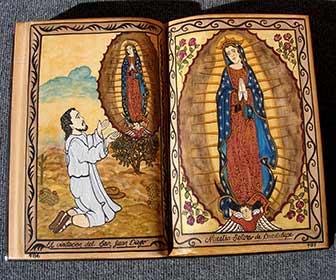
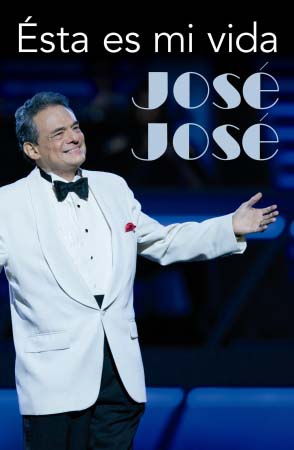

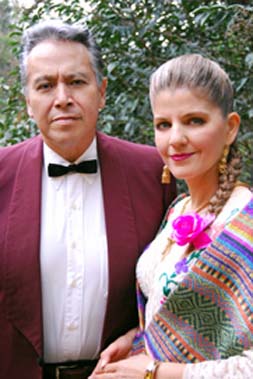 One of Mexico's foremost concert guitarists, Enrique Velasco´s career spans over 38 years, with performances in over 32 countries in Europe, Asia and the Americas, and featuring five tours of Italy and six of the former Soviet Union. Venues at which he has performed include the Kennedy Center in Washington; Tchaikovsky Hall and Tetryakov Hall in Moscow; the Philharmonic National Concert Halls in Kiev, Odessa, St. Petersburg, Vilnius, Baku, Alma-Ata, Tbilisi, Zelinograd and Tashkent; Chopin Auditorium in Warsaw, UNESCO Auditorium in Paris; and the National Palace of Fine Arts, Netzahualcoyotl Hall and the National Center of Arts in Mexico. Velasco has been a guest soloist for many of the foremost orchestras of Mexico as well as several prestigious foreign orchestras including the Washington Chamber Orchestra and the Vermont Symphony, the Cremona Chamber Orchestra, and the Guatemala National Symphony. His discography comprises seven CDs. Currently, Velasco teaches on the music faculty of the Universidad Veracruzana, where he also served as chairman, and the Superior Institute of Music in Veracruz, Mexico. Amongst his numerous acheivements, Velasco was awarded First Place in the National Guitar Contest of Mexico, nominated Concert Artist of the Year by the Mexican Union of Critics, and elected President of the Jury of the Polish Manuel Ponce International Guitar Competition.
One of Mexico's foremost concert guitarists, Enrique Velasco´s career spans over 38 years, with performances in over 32 countries in Europe, Asia and the Americas, and featuring five tours of Italy and six of the former Soviet Union. Venues at which he has performed include the Kennedy Center in Washington; Tchaikovsky Hall and Tetryakov Hall in Moscow; the Philharmonic National Concert Halls in Kiev, Odessa, St. Petersburg, Vilnius, Baku, Alma-Ata, Tbilisi, Zelinograd and Tashkent; Chopin Auditorium in Warsaw, UNESCO Auditorium in Paris; and the National Palace of Fine Arts, Netzahualcoyotl Hall and the National Center of Arts in Mexico. Velasco has been a guest soloist for many of the foremost orchestras of Mexico as well as several prestigious foreign orchestras including the Washington Chamber Orchestra and the Vermont Symphony, the Cremona Chamber Orchestra, and the Guatemala National Symphony. His discography comprises seven CDs. Currently, Velasco teaches on the music faculty of the Universidad Veracruzana, where he also served as chairman, and the Superior Institute of Music in Veracruz, Mexico. Amongst his numerous acheivements, Velasco was awarded First Place in the National Guitar Contest of Mexico, nominated Concert Artist of the Year by the Mexican Union of Critics, and elected President of the Jury of the Polish Manuel Ponce International Guitar Competition.
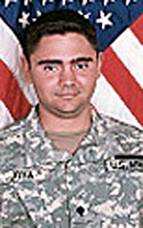
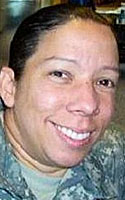
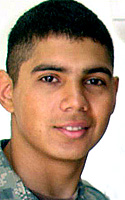
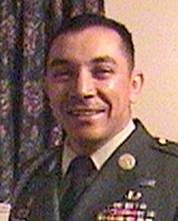
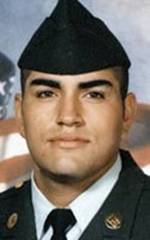
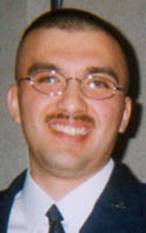
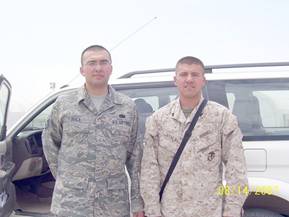
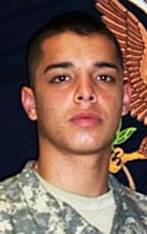
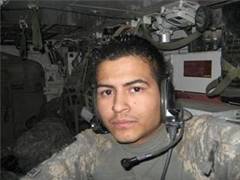

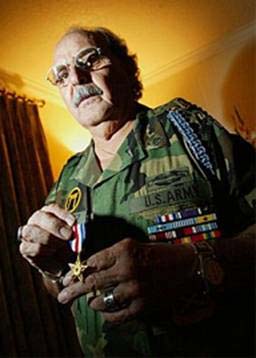 Jesus Rodriguez darted through
the darkness, diving in and out of foxholes carved into a Korean hillside, shaking with fear as a bullet sliced through his pant
leg. A field phone rang, ordering him to hold his ground. Cold and alone, the 18-year-old
clutched his M-1 rifle and, for hours, spit bullets at oncoming attackers. At one point, he used
the rifle to club a North Korean soldier who lunged at him.Rodriguez doesn't remember
how many he killed that night n a dozen at least -- but he's never forgotten the fear.``I don't like to think about it. It's not like all that John Wayne stuff,'' he said.
Jesus Rodriguez darted through
the darkness, diving in and out of foxholes carved into a Korean hillside, shaking with fear as a bullet sliced through his pant
leg. A field phone rang, ordering him to hold his ground. Cold and alone, the 18-year-old
clutched his M-1 rifle and, for hours, spit bullets at oncoming attackers. At one point, he used
the rifle to club a North Korean soldier who lunged at him.Rodriguez doesn't remember
how many he killed that night n a dozen at least -- but he's never forgotten the fear.``I don't like to think about it. It's not like all that John Wayne stuff,'' he said.

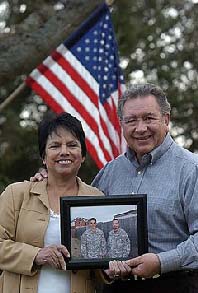

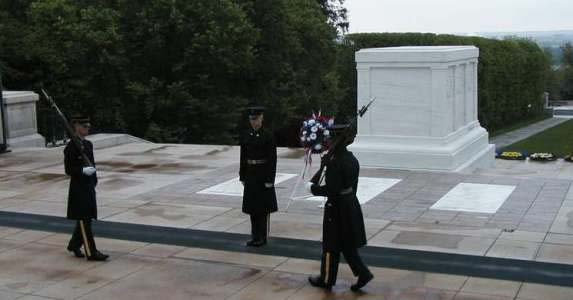
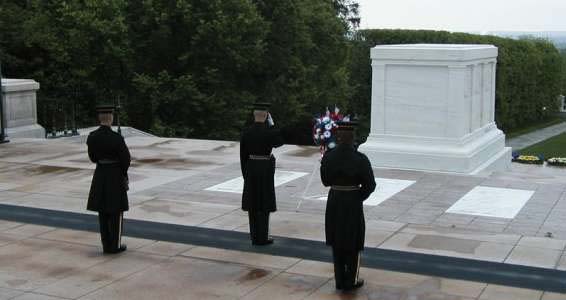
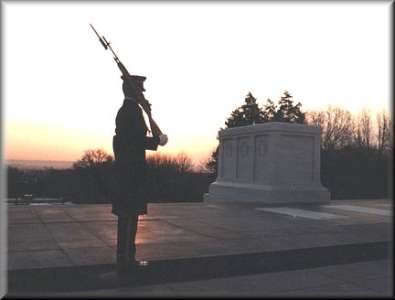
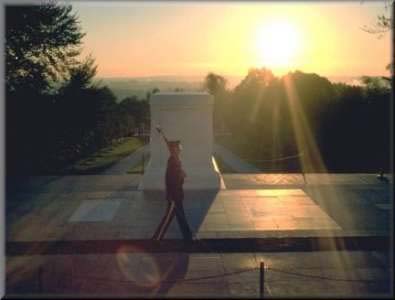
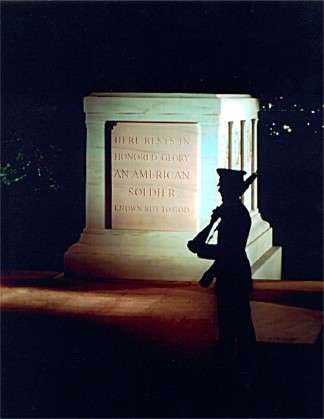
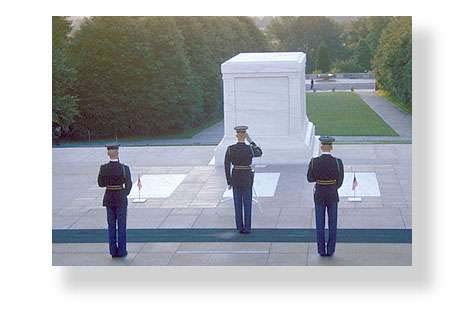
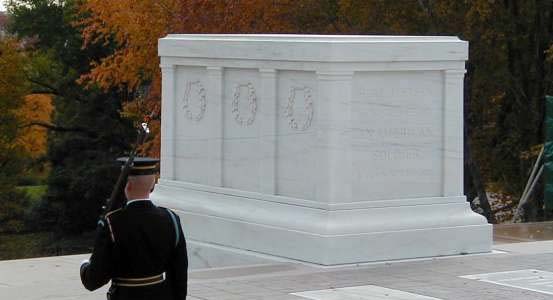

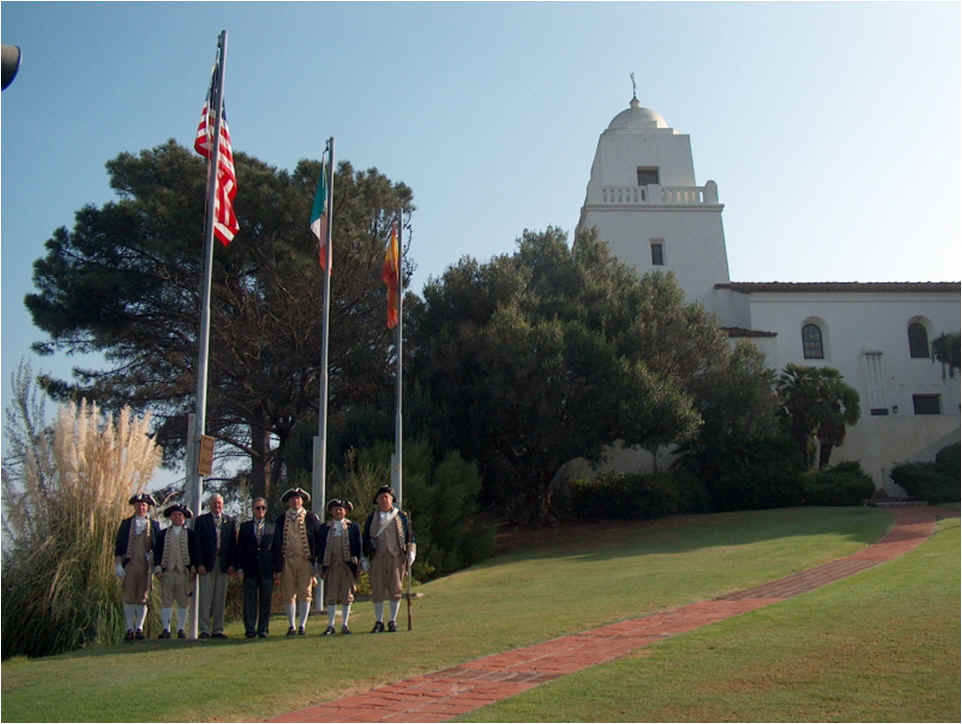
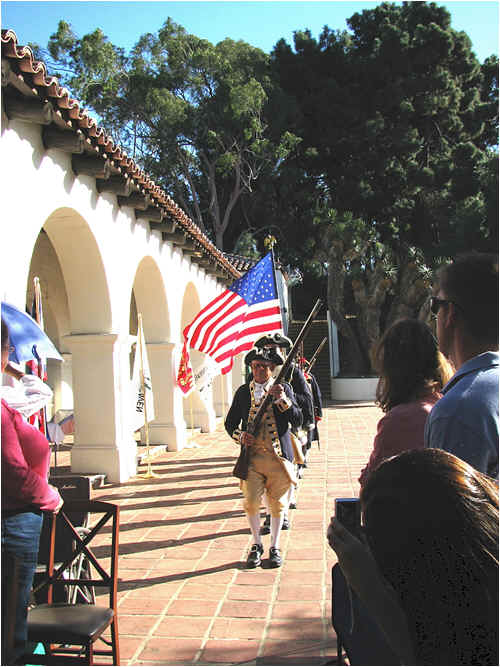
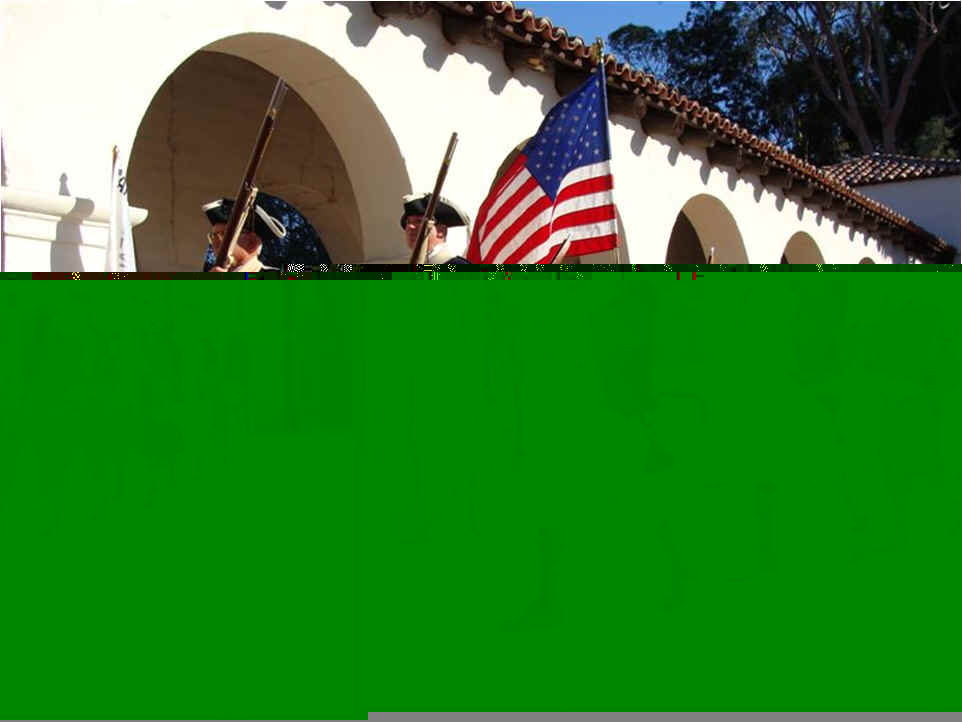
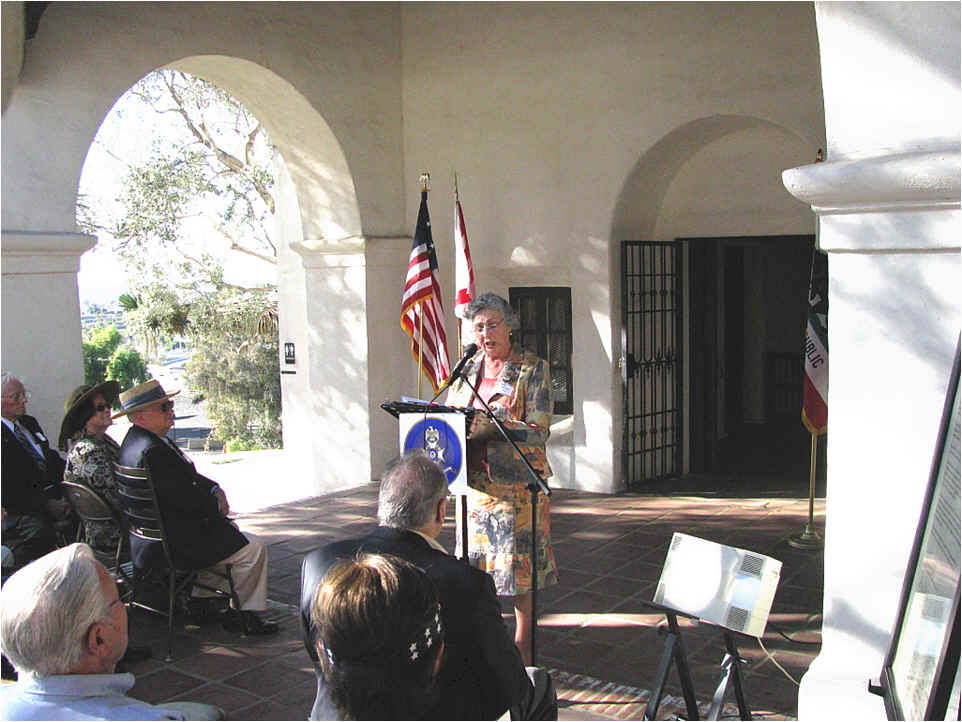
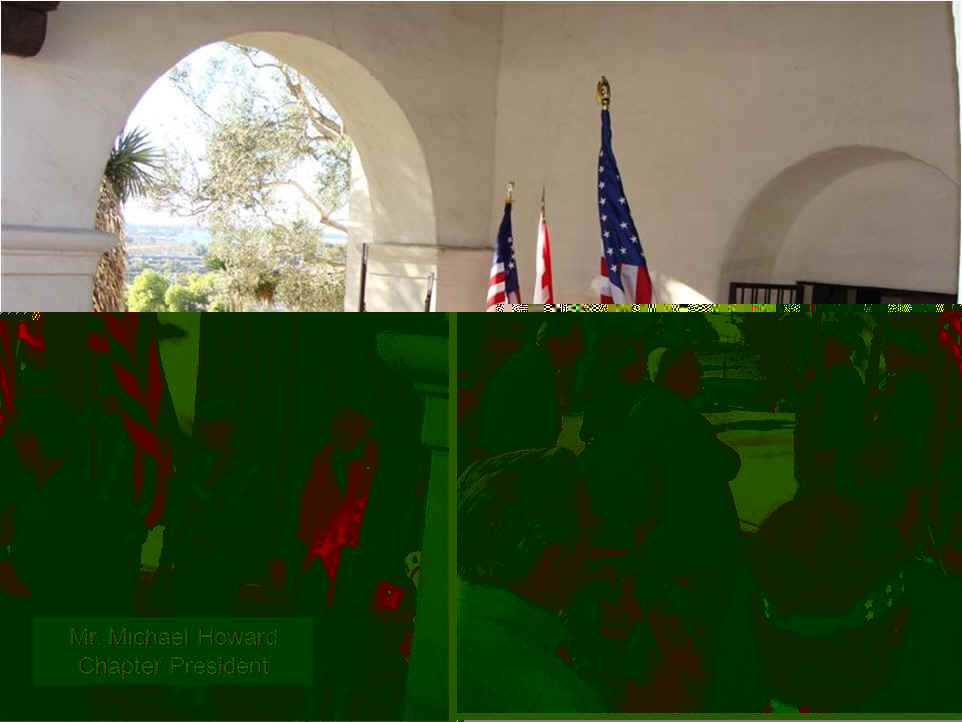
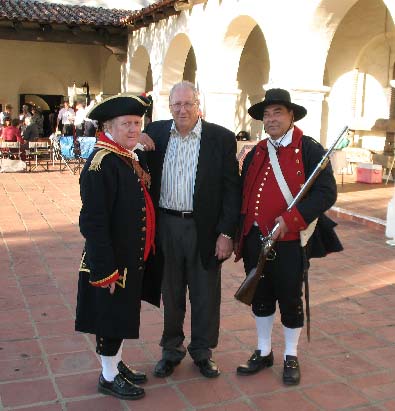
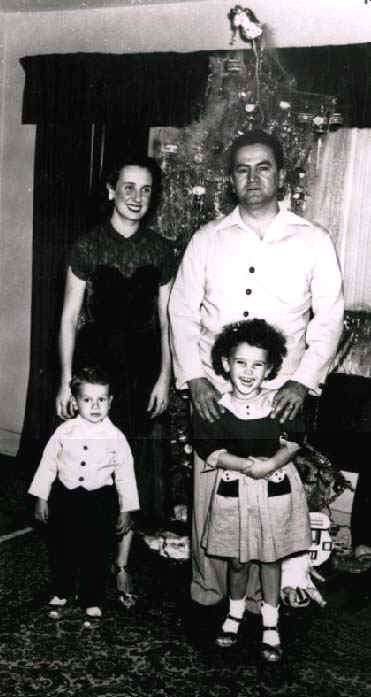
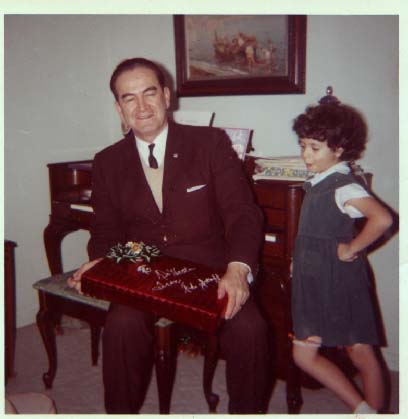 My
father became busy with his medical practice and advocacy work and no
longer participated in the tree purchasing and decorating.
My
father became busy with his medical practice and advocacy work and no
longer participated in the tree purchasing and decorating.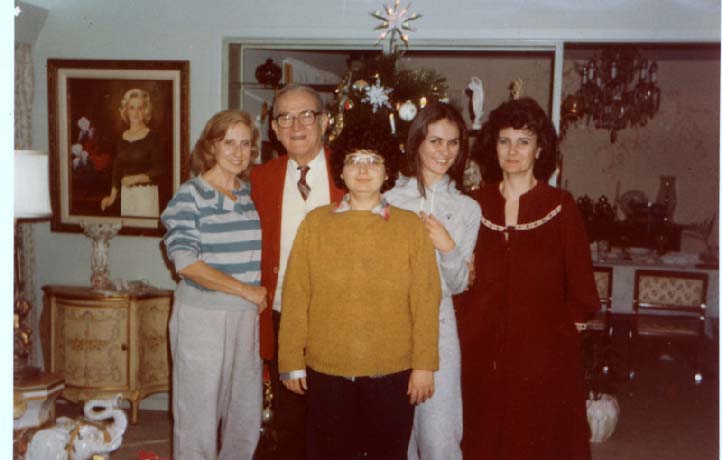

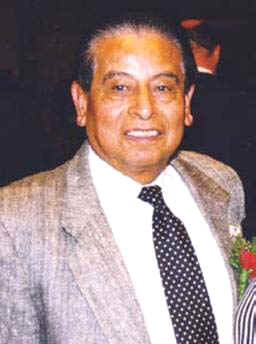
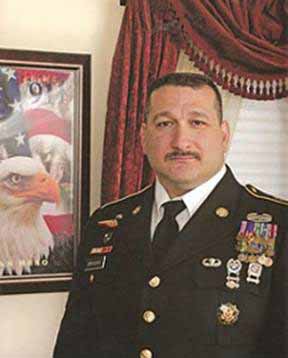
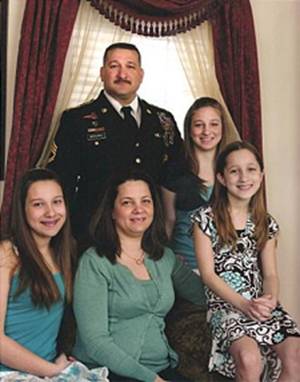
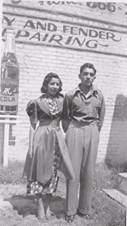 Sometime
between 1922 and 1930, Manuel’s mother separated from his father and
moved to
Sometime
between 1922 and 1930, Manuel’s mother separated from his father and
moved to 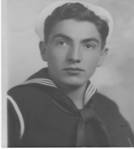 His
boot camp was in
His
boot camp was in  On
December 7, 1941, the U.S.S. Arizona was at anchor in
On
December 7, 1941, the U.S.S. Arizona was at anchor in 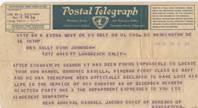 Worried
about her son, Sallie tried contacting the War Department, to no avail.
Worried
about her son, Sallie tried contacting the War Department, to no avail.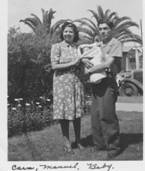 In
1938, Manuel’s sister met and married Harold Fowler who was stationed on
the Aircraft Carrier U.S.S. Lexington. They had a son named Harold in
April 1939, who Manuel affectingly called “squirt”.
In
1938, Manuel’s sister met and married Harold Fowler who was stationed on
the Aircraft Carrier U.S.S. Lexington. They had a son named Harold in
April 1939, who Manuel affectingly called “squirt”. Margaret
had her husband petition the fleet Chaplin to have the body exhumed.
Margaret
had her husband petition the fleet Chaplin to have the body exhumed. 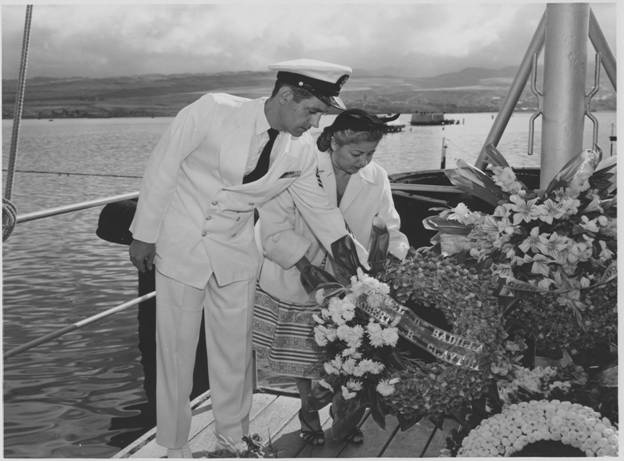 May
30, 1959, Memorial Day Services were held on the U.S.S. Arizona.
May
30, 1959, Memorial Day Services were held on the U.S.S. Arizona.
 When filmmaker Ken Burns’s 2007 PBS documentary The War failed to
include the voices and testimonies of Mexican-American and Latino
veterans, the Latino community raised its voice against being left
out.
When filmmaker Ken Burns’s 2007 PBS documentary The War failed to
include the voices and testimonies of Mexican-American and Latino
veterans, the Latino community raised its voice against being left
out.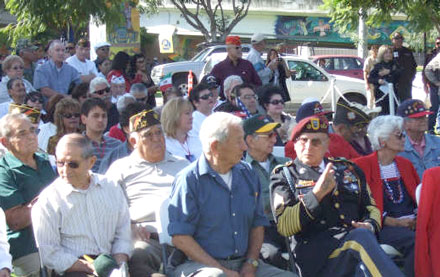 Some
of the guest veterans that were present at the ceremony included
LHVT Committee Chairperson Felipe Pulido and World War II veteran
Adam Gastelum.
Some
of the guest veterans that were present at the ceremony included
LHVT Committee Chairperson Felipe Pulido and World War II veteran
Adam Gastelum.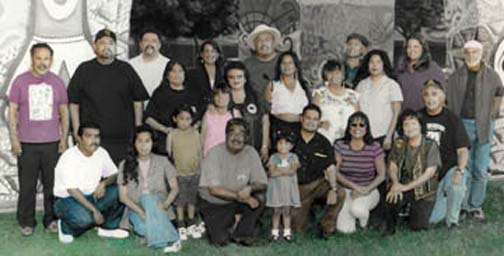
 y
concrete and rock-hard dirt that once dominated the site into a glorious
thing of beauty that would mirror and showcase the beauty, culture and
spirit of the Chicano people. Today the murals in Chicano Park are
world-famous and constitute (along with various sculptures) the world's
largest outdoor art gallery.
y
concrete and rock-hard dirt that once dominated the site into a glorious
thing of beauty that would mirror and showcase the beauty, culture and
spirit of the Chicano people. Today the murals in Chicano Park are
world-famous and constitute (along with various sculptures) the world's
largest outdoor art gallery.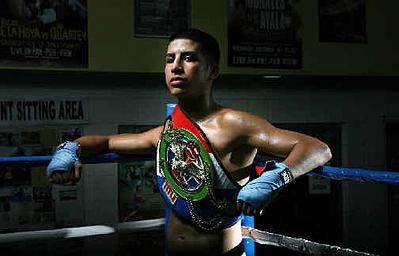
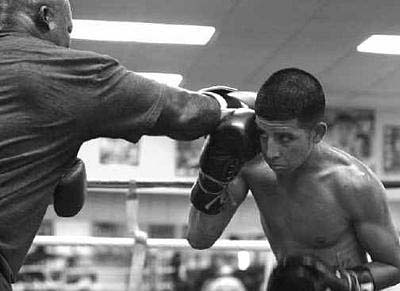
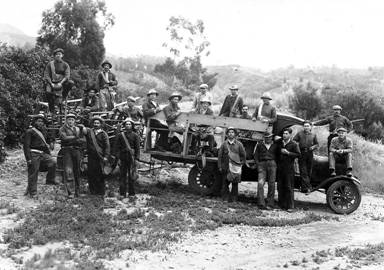
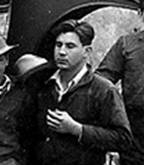
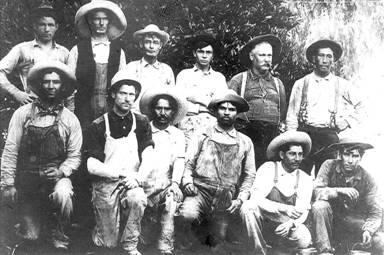
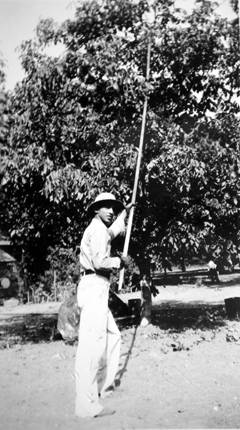
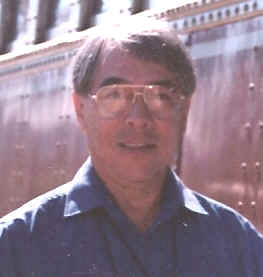
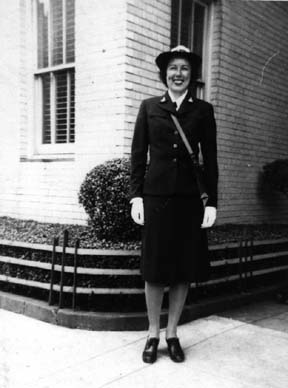
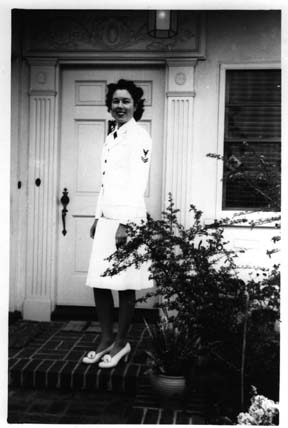
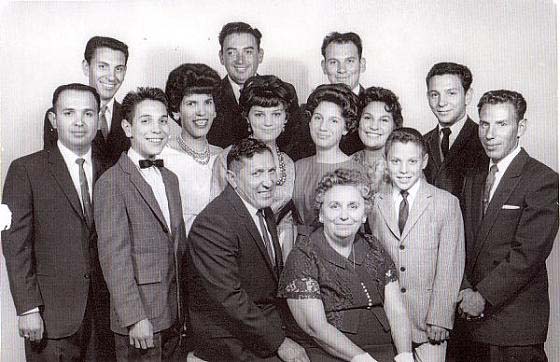
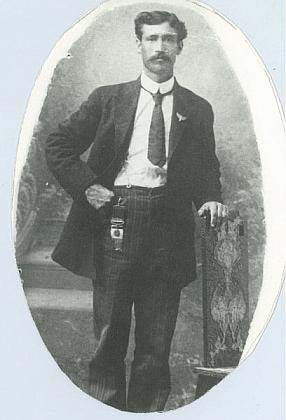 Along
with the well known prominent landowners like the local Irvine and
Segerstrom families, the Daniel Contreras and Francisco Fierro families
can also be counted among the early pioneer families of Orange County.
Along
with the well known prominent landowners like the local Irvine and
Segerstrom families, the Daniel Contreras and Francisco Fierro families
can also be counted among the early pioneer families of Orange County.


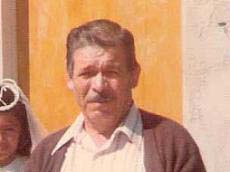 PATRIARCH:
Santiago Vasquez, circa 1971. He came to Orange when the mine he was
working at in Arizona closed. Courtesy of Rosemary Vasquez-Tuthill
PATRIARCH:
Santiago Vasquez, circa 1971. He came to Orange when the mine he was
working at in Arizona closed. Courtesy of Rosemary Vasquez-Tuthill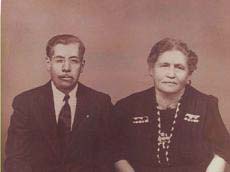
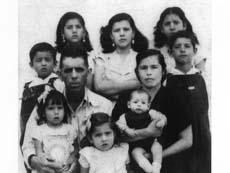 FAMILY
PORTRAIT:
FAMILY
PORTRAIT: 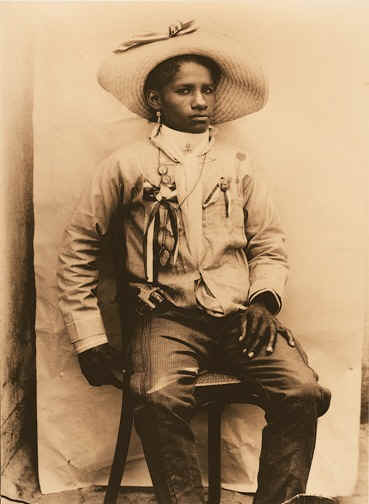
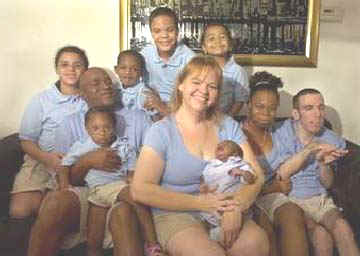
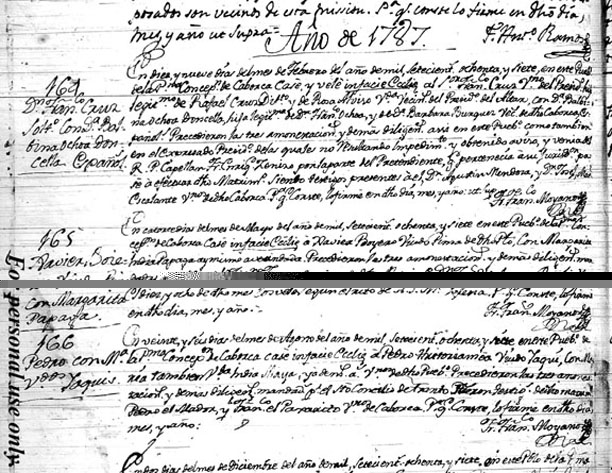
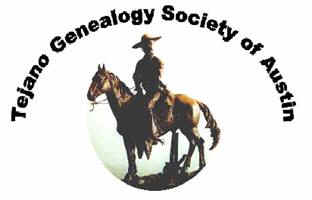 Nosotros
Los Tejanos
Nosotros
Los Tejanos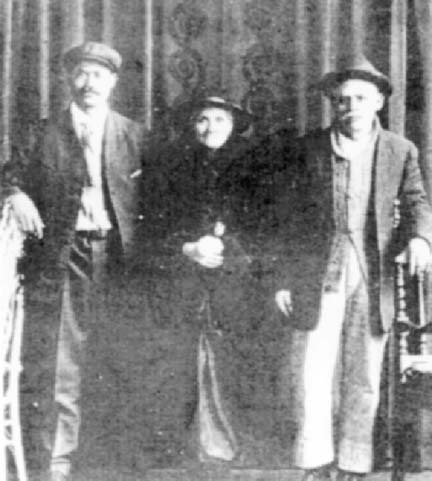
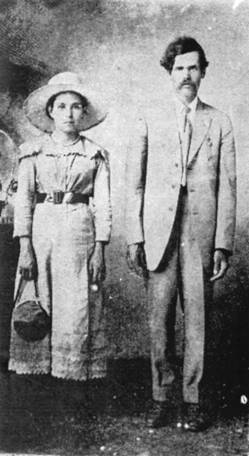

 MADRID
(AFP, Nov 19, 2008) – Spain on Wednesday promised to help families of victims who disappeared during the 1936-39 civil war and the ensuing dictatorship of General Francisco Franco to track their remains.
MADRID
(AFP, Nov 19, 2008) – Spain on Wednesday promised to help families of victims who disappeared during the 1936-39 civil war and the ensuing dictatorship of General Francisco Franco to track their remains.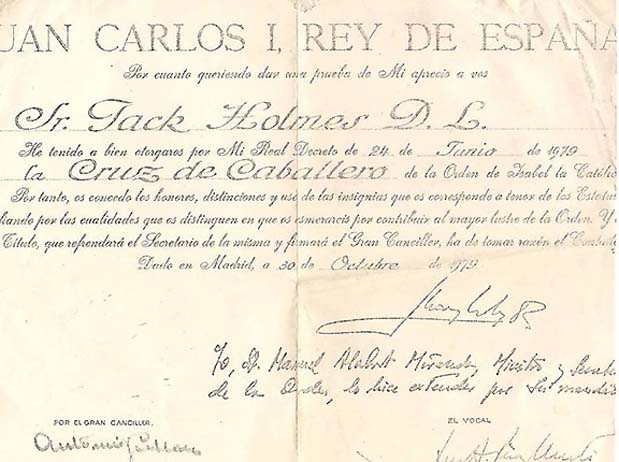
 The
Age of Exploration marked the apogee of Portuguese imperial power and
wealth. At the beginning of the fifteenth century Portugal had a
population of one and a quarter million and an economy dependent on
maritime trade with Northern Europe. Although Portugal lacked the wealth
and population of its contemporaries, it would lead the European community
in the exploration of sea routes to the African continent, the Atlantic
Islands, and to Asia and South America over the course of the sixteenth
century. Several factors contributed to Portugal becoming the pre-eminent
European pioneer in maritime exploration.
The
Age of Exploration marked the apogee of Portuguese imperial power and
wealth. At the beginning of the fifteenth century Portugal had a
population of one and a quarter million and an economy dependent on
maritime trade with Northern Europe. Although Portugal lacked the wealth
and population of its contemporaries, it would lead the European community
in the exploration of sea routes to the African continent, the Atlantic
Islands, and to Asia and South America over the course of the sixteenth
century. Several factors contributed to Portugal becoming the pre-eminent
European pioneer in maritime exploration.